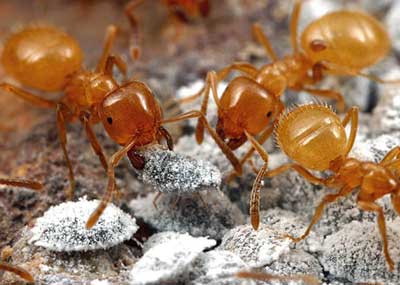Store fat for famine days
Excess fat seems to be unacceptable for sports athletes, but with ants, it's a matter of survival and they do everything they can to store energy.
When conditions are favorable and food is abundant, ants store a lot of fat that can be used in times of hunger. They can pass fat to each other through excretion from the mouth and through non-fertilized eggs when needed.

(Photo: LiveScience)
"Understanding this energy storage mechanism will be important to understand the division of labor characteristics of insect groups and evolution such as the time of reproduction, hibernation," Daniel researcher Hahn at the University of Florida said.
Hahn examined two closely related ant species to see how they stored fat. Both ant groups live in the same environment but differ in their genes and are distinguished by their light and dark body color.
The darker group has more fat than the total number of thin ones, while the bright-colored group has more fat, Hahn said.
In general, weaver ant colonies consist of 2 types of ants: large soldier ants and moderate worker ants. Soldier ants can store more fat than worker ants. The study found that bright ants had more fat soldiers. However, dark ants have a lot more worker ants, so the total fat of the two groups is equal.
"The difference in the fat storage strategy of the two species has led to significant differences in behavior, and also led to different rates of growth in each individual," Hahn said.
MT
- Somalia drought: 110 people died in 48 hours
- HP built HP Store chain
- Video: The shopping store does not have a checkout counter in the US
- The most impressive photographic image stored on bacteria - the new type of human hard drive
- New breakthroughs turn DNA into a data bank
- Insects: The respiratory system is optimized
- Why is the sky cloudless on sunny days?
- 16 scenes of affliction that we are suffering in rainy days
- Women store the DNA of every man they have ever had sex with
- Laser control helps store light
- Discover where and how seeds store iron.
- How did the ancients store and consume animal bone marrow?
 Why do potatoes have eyes?
Why do potatoes have eyes? 'Tragedy' the world's largest carnivorous life: Death becomes ... public toilet
'Tragedy' the world's largest carnivorous life: Death becomes ... public toilet Tomatoes were once considered 'poisonous' for 200 years
Tomatoes were once considered 'poisonous' for 200 years Detecting microscopic parasites on human face
Detecting microscopic parasites on human face